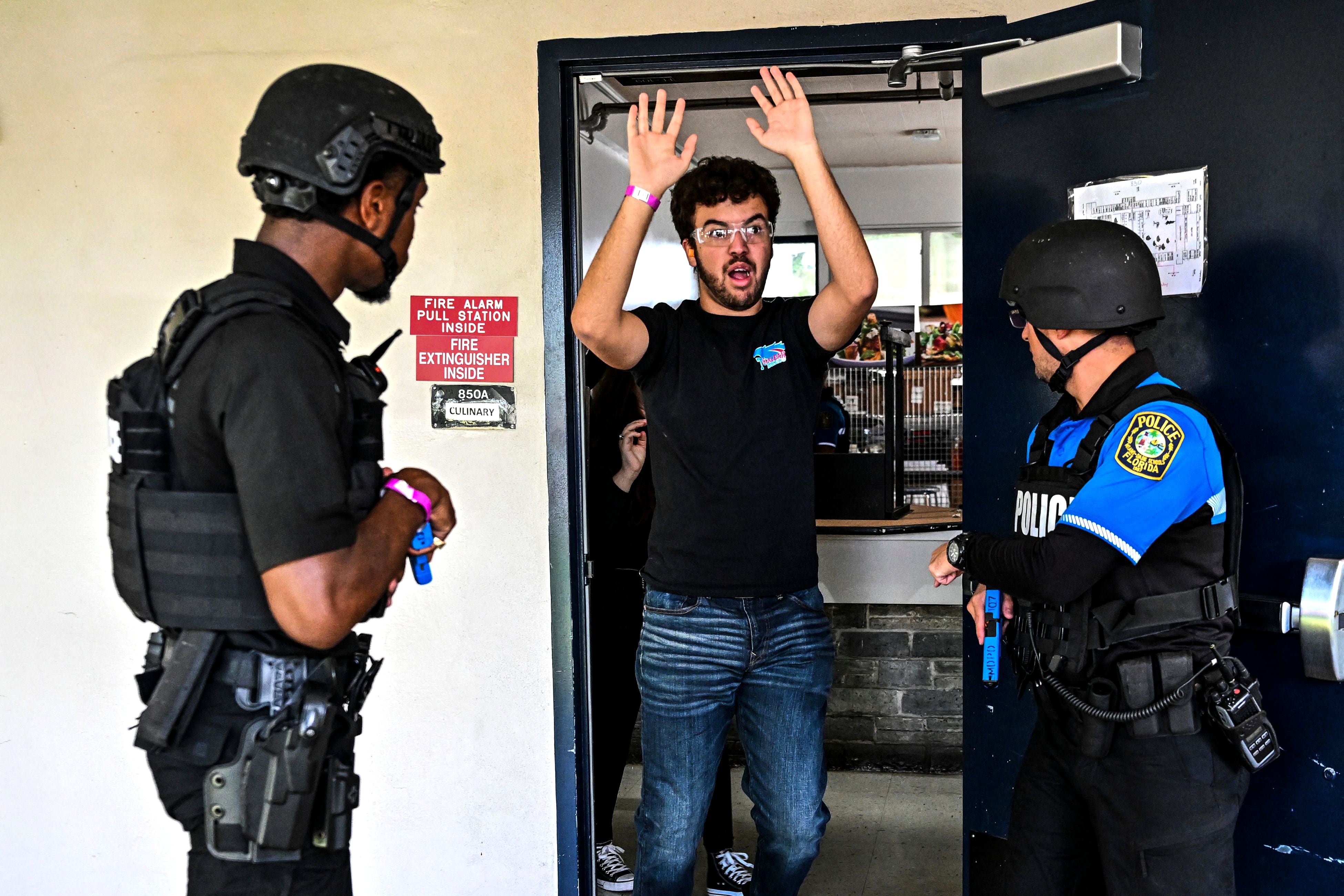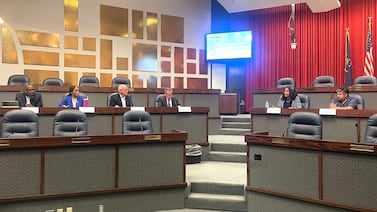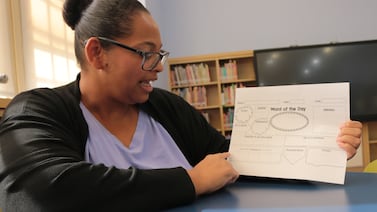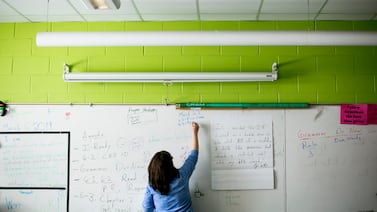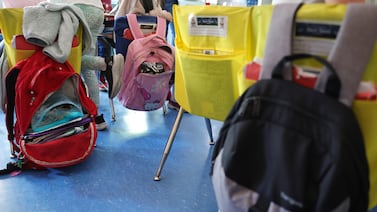Sign up for Chalkbeat’s free weekly newsletter to keep up with how education is changing across the U.S.
Soon after Robert Murtfeld’s child started attending kindergarten, the school had an unannounced lockdown drill.
His child was only five years old and, as Murtfeld remembers, didn’t really understand that it was just a drill, not an actual school shooting. Murtfeld himself was also shocked.
“I joined another parent who, like me, was also raised abroad, and we had an issue with this system at work here,” said Murtfield, who grew up in Germany. “We noticed that many American parents didn’t have that issue necessarily or didn’t think about it.”
So Murtfeld decided to advocate for reforming how schools conduct these exercises. His efforts led to changes at his school, which started letting parents know in advance when the drills would happen and giving them the opportunity to opt their child out of them. His work also affected New York state legislation that now requires schools to notify parents about lockdown drills beforehand, and to conduct them in “a trauma-informed, developmentally and age-appropriate manner.”
Murtfeld has company. As drills and simulations have become increasingly common in American schools and universities, organizations representing school psychologists, law enforcement, and others have lobbied to improve them and reduce their negative effects on students.
Now the federal government’s paying attention too. Last month, President Joe Biden signed an executive order creating a multi-agency effort to develop guidelines and share resources on making active shooter drills safer and more effective.
The initiative resulted from the work of the White House Office of Gun Violence Prevention, which the Biden administration created in 2023 and is supervised by Vice President Kamala Harris, the Democratic nominee for president.
“As Vice President Harris traveled to meet young leaders around the country, she asked them who had gone through these drills, and every hand in the room was raised, showing that it is a big concern for students,” said Rob Wilcox, the office’s deputy director.
One of the key facets of Biden’s executive order is for the federal government to provide information on “how to prevent or limit trauma or psychological distress associated with active-shooter drills.”
A few groups already have some ideas to share. Organizations like the National Association of School Psychologists (NASP) and the National Association of School Responding Officers (NASRO) have worked together to collect evidence and create guidelines on the best practices. Their cooperation could bear fruit through invigorated federal interest.
Kelly Vaillancourt Strobach, NASP’s director of policy and advocacy, said that the two groups are already reaching out to the agencies responsible for fulfilling the executive order.
“We are very much hoping that whatever the federal government puts out is very much aligned with the guidance that we have been continuing to refine over the last ten years,” said Strobach. “We also certainly hope it is rooted in evidence. Even though there’s still a lack of empirical research on this topic, there is some research that can be referenced.”
How opinions about school lockdown drills changed
Lockdown drills are meant to prepare students for various situations in which a threat is inside the school building — such as active shooter situations.
The likelihood of a student experiencing an active shooter situation remains statistically very low. The opposite is true of lockdown drills: 95.5% of American schools conducted them in the 2021-2022 school year, according to the National Center for Education Statistics.
But as drills became more common, reports about their nightmarish depictions of violence in schools emerged as well. Such instances featured the use of gunshot noises, students posing with fake blood as victims, and adults playing the role of assailants.
These dramatic — and potentially traumatic — devices represent an inability to understand the differences between drills, which are supposed to build trust and lower students’ anxiety among students, and simulations, which are high-stress scenarios aimed at preparing law enforcement for situations like those involving active shooters, said Mo Canady, NASRO’s executive director.
Agencies and districts “began to do full-scale situational training in a school environment with students,” said Canady. “As that played out, we began to take a hard look at that and ask ourselves if we were doing the right things, especially with adolescents in the building.”
Despite stories from students and educators, there is not a great deal of evidence about the impacts of procedures like lockdown drills and simulations on the mental health of students. And what research there is does not differentiate between the various drills that can be used or isolate the factors that could contribute to increase anxiety among students, according to Jaclyn Schildkraut, executive director of the Regional Gun Violence Research Consortium at the State University of New York’s Rockefeller Institute of Government.
There are several studies showing the positive outcomes of performing lockdown drills and discussion-based exercises, like “making students feel more prepared, lowering their anxiety, helping them have lower fear of harm, or be less likely to perceive that a school shooting could happen at their school,” Schildkraut said.
One of these studies found that nearly 87% of junior high and high school students reported feeling more prepared to respond to a violent incident after discussion-based training.
Other research indicates that whatever benefit they may provide to schools to prepare for violent incidents, many students feel lockdown drills themselves are harmful.
The Georgia Institute of Technology’s Social Dynamics and Wellbeing Lab, partnering with the Everytown for Gun Safety Support Fund, analyzed social media conversations related to American schools before and after drills. The latter group is affiliated with Everytown for Gun Safety, which supports an assault weapons ban and other measures to prevent gun violence.
They saw “a 42% increase in anxiety and stress (as evidenced by an increase in such words as afraid, struggling, and nervous) and a 39% increase in depression (evidenced by words such as therapy, cope, irritability, suicidal) following drills,” according to their report, which they originally published in 2020.
Before Biden issued his executive order, U.S. Secretary of Education Miguel Cardona commissioned the National Academy of Sciences to conduct a study about how active shooter drills affect student health and well-being. The study is not done but it could help fulfill the executive order.
Curbing student trauma caused by active shooter drills
Guidance from NASP, NASRO, Sandy Hook Promise, and other organizations gives hints about what may be included in the guidelines Biden’s executive order is seeking.
Those three groups recommend that the drills should be part of a larger strategy for preventing multiple threats.
“It’s important to practice emergency procedures so that in the event of an emergency, it reduces chaos,” said Strobach of the school psychologists group. “But, to do a fire drill, you don’t necessarily start a fire. So, there are ways for schools to prepare for any type of crisis without actually simulating it.”
Specialists interviewed by Chalkbeat agreed that full-scale simulations should not be part of students' routines and that approaches should consider different methods of preparing them for emergency situations.
For example, the guidelines from NASP and NASRO suggest schools use strategies like “discussion-based exercises,” such as workshops and orientations, so students can talk about the drills before experiencing them.
The guidance does not recommend excluding “action-based” exercises but does make some recommendations about them.
One is to conduct walk-throughs, where kids can go through the instructions step-by-step and ask questions as the exercise happens. After kids are prepared for this, the more common lockdown drills would be the next step.
Biden also stressed that he wants to see resources about communicating with students, families, and others “both about the drills and when the drills are happening,” said Wilcox of the White House’s Office of Gun Violence Prevention.
The president also wants to ensure the executive order focuses on civil rights laws and special populations, such as students with disabilities, Wilcox noted. Reports have highlighted situations in which drills have failed to consider the needs of children with physical disabilities, for example.
Researchers also point out that drills can have a stronger effect on the emotional health of children that have gone through previous traumas.
But ultimately, what the White House executive order produces will not be mandatory, so it will depend on local leaders to decide to follow the guidelines and use the resources.
“We hope that the information will help leaders from all levels to prevent and eliminate extra trauma and harm on our students,” Wilcox said.
Correction: This article has been updated to correct the spelling of Robert Murtfeld‘s name.
Wellington Soares is Chalkbeat’s national education reporting intern based in New York City. Contact Wellington at wsoares@chalkbeat.org.

